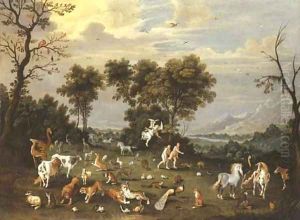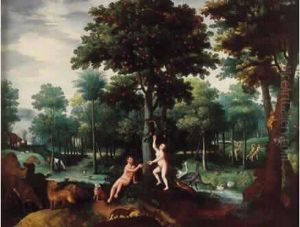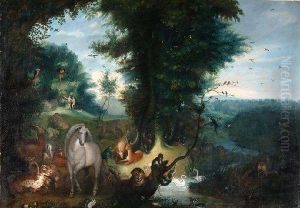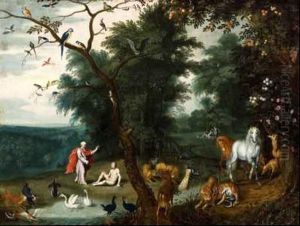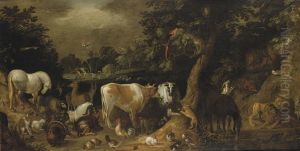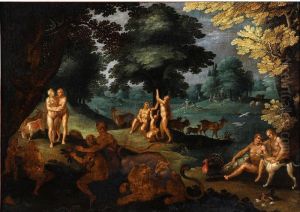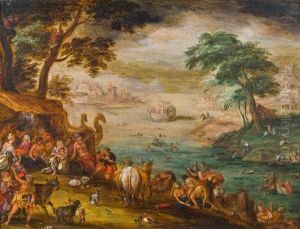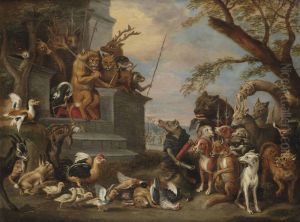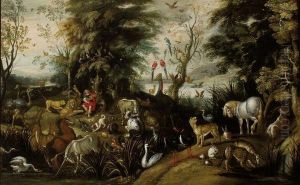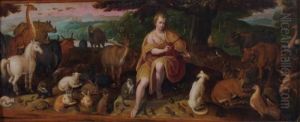Frederick Bouttats Paintings
Frederick Bouttats, born in 1610 and dying in 1676, was a Flemish engraver hailing from a large family of artists that significantly contributed to the art scene in the Southern Netherlands during the 17th century. The Bouttats family, known for their engraving and printmaking skills, played a pivotal role in the dissemination of visual culture during this period. Frederick was among the family's second generation of artists, and his works were instrumental in portraying various subjects ranging from portraits to landscapes, religious themes, and emblematic representations.
His training, like many artists of his time, was rooted in the family tradition, learning the craft under the guidance of his relatives, which included his father, Gillis Bouttats the Elder, who was also a noted engraver. This familial apprenticeship system ensured that skills, styles, and techniques were passed down and preserved, allowing Frederick to develop a distinctive style that combined intricate detail with a keen sense of composition.
Throughout his career, Frederick Bouttats contributed to numerous publications, illustrating books and creating standalone prints. His engravings not only served as artworks but also as a means of illustrating scientific and literary works, making him a versatile artist who bridged the gap between art and knowledge dissemination. His ability to capture detail made his prints highly valued for their accuracy and beauty.
Despite his contributions, Frederick Bouttats, like many artists of his era, is not as well-known today outside of specialist circles. His works, however, remain a testament to the skill and artistry of the Flemish engraving tradition. They continue to be studied and appreciated for their technical excellence and their role in the visual culture of the 17th century. His legacy, preserved in collections and museums, offers insight into the rich artistic heritage of the Flemish region and the broader European context of printmaking and engraving during the Baroque period.
